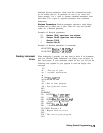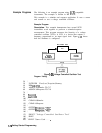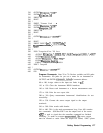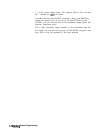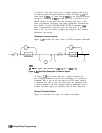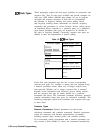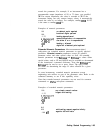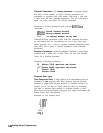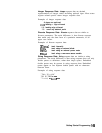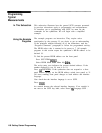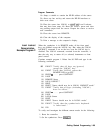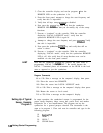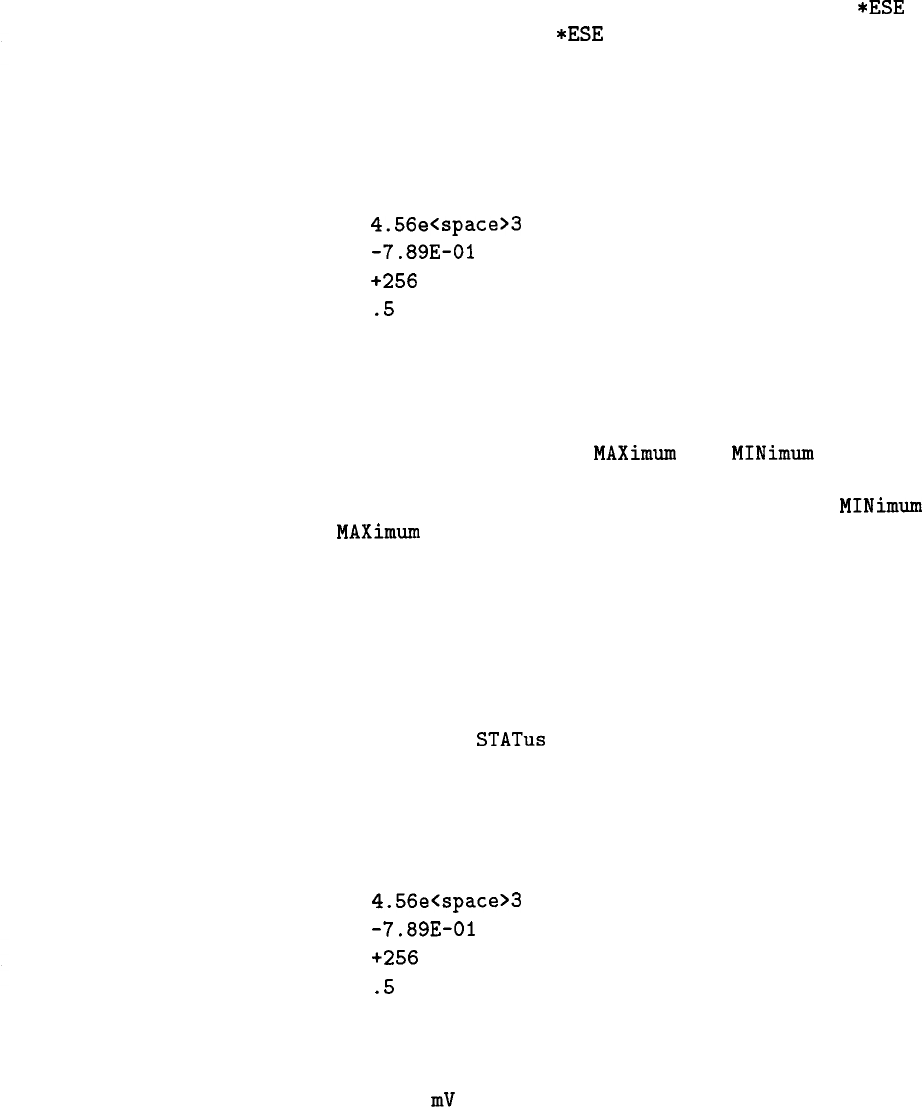
rounds the parameter. For example, if an instrument has a
programmable output impedance of 50 or 75 ohms, you specified
76.1 for output impedance, the value is rounded to 75. If the
instrument setting can only assume integer values, it automatically
rounds the value to an integer. For example, sending
*ESE
10.123
is the same as sending
*ESE
10.
Examples of numeric parameters:
100
no decimal point required
100.
fractional digits optional
-1.23
leading signs allowed
4.56e<space>3
space allowed after e in exponentials
-7.89E-01
use either E or e in exponentials
+256
leading + allowed
.5
digits left of decimal point optional
Extended Numeric Parameters. Most measurement related
subsystems use extended numeric parameters to specify physical
quantities. Extended numeric parameters accept all numeric
parameter values and other special values as well. All extended
numeric parameters accept
MAXimum
and
MINimum
as values. Other
special values, such as UP and DOWN may be available as documented
in the instrument’s command dictionary. Note that
MINimum
and
MAXimum
can be used to set or query values. The query forms
are useful for determining the range of values allowed for a given
parameter.
In some instruments, extended numeric parameters accept
engineering unit suffixes as part of the parameter value. Refer to the
command summary to see if this capability exists.
Note that extended numeric parameters are not used for common
commands or
STATUS
subsystem commands.
Examples of extended numeric parameters:
100.
any simple numeric values
-1.23
largest valid setting
4.56e<space>3
-7.89E-01
+256
.5
MAX
MIN
-100
mV
valid setting nearest negative infinity
negative 100 millivolts
Getting Started Programming 1-83



